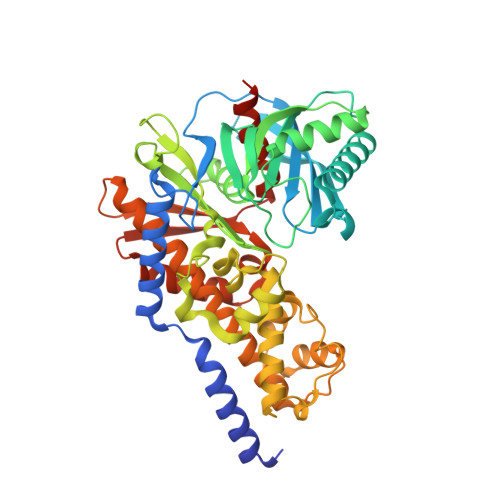The active conformation of human glucokinase is not altered by allosteric activators
Petit, P., Antoine, M., Ferry, G., Boutin, J.A., Lagarde, A., Gluais, L., Vincentelli, R., Vuillard, L.(2011) Acta Crystallogr D Biol Crystallogr 67: 929-935
- PubMed: 22101819
- DOI: https://doi.org/10.1107/S0907444911036729
- Primary Citation of Related Structures:
3F9M, 3FGU, 3ID8, 3IDH, 4NO7 - PubMed Abstract:
Glucokinase (GK) catalyses the formation of glucose 6-phosphate from glucose and ATP. A specific feature of GK amongst hexokinases is that it can cycle between active and inactive conformations as a function of glucose concentration, resulting in a unique positive kinetic cooperativity with glucose, which turns GK into a unique key sensor of glucose metabolism, notably in the pancreas. GK is a target of antidiabetic drugs aimed at the activation of GK activity, leading to insulin secretion. Here, the first structures of a GK-glucose complex without activator, of GK-glucose-AMP-PNP and of GK-glucose-AMP-PNP with a bound activator are reported. All these structures are extremely similar, thus demonstrating that binding of GK activators does not result in conformational changes of the active protein but in stabilization of the active form of GK.
- BioXtal, PX Unit, c/o AFMB, UMR 6098, Case 932, 163 Avenue de Luminy, 13288 Marseille CEDEX 09, France.
Organizational Affiliation:


















